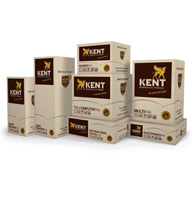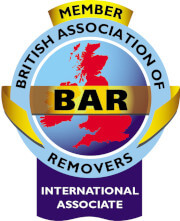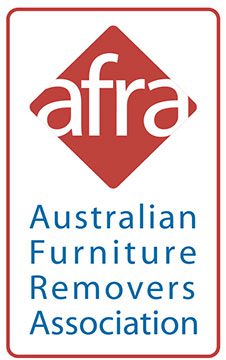Packing to Move House – Where to Start – What to Pack First When Moving
18th January, 2018

When it comes to knowing how to start packing for a move it’s all about creating a system that you can methodically follow. It’s a massive undertaking, and without a clear plan in mind, you can quickly get lost and run out of time. We’ve been moving Australians for over 75 years, so we know exactly where to start when moving house. Follow our step-by-step process on packing to move house – where to start:
Step 1: Source removal quotes, set a moving date and book a removalist
Step 2: Create an inventory and decide what you want to move
Step 3: Purchase high quality packing materials
Step 4: What to pack first when moving: storage areas
Step 5: Start sorting and packing rarely used items
Step 6: Pack items in seldom-used rooms and areas
Step 7: Peruse our tips for packing specific items
Step 8: Label boxes for easy unpacking at your new home
Step 1: Source Removal Quotes, Set a Moving Date and Book a Removalist
Before you worry about what to pack first when moving house, you need to source quotes from professional, reputable removalist companies. When sourcing these quotes, be sure that you’re comparing like-for-like, and that the company can provide any ancillary services that you might need, such as packing or pet transport.
Next, you need a concrete date locked in for moving day. Not only will this allow you to book in your preferred removalist, it also enables you to plan your packing so that everything is completed by moving day.
Once you have finalised your moving date, lock in your preferred moving company. Ensure that you stay in touch with your removals team and keep them abreast of any changes or potential issues that may arise. Communication is vital to a successful move.
Step 2: Create an Inventory and Decide What You Need to Move
Don’t decide on how to start packing to move until you’ve decided on exactly what items need to move. Your house is probably filled with items that you rarely use or need, and you don’t want to bring that clutter into your new life. On top of that, you can also save a considerable amount of time and money by reducing the volume of the items that you need to move. To minimise clutter before moving:
- Donate or sell any items that you haven’t used in the last year
- Get rid of any items that you own multiples of
- Throw away or donate any clothing that isn’t in excellent condition, or is out of style
- Only keep things that have a function, that you love or need.
Step 3: Purchase High Quality Packing Materials
When it comes to knowing where to start when moving house, you need to ensure you have quality packing materials on hand. Quality packing materials are the only thing that will give your valuables the protection they need. You may cut costs by using old, second-hand boxes and newspaper, but you may end up losing money in the long run by having to replace damaged items. Kent recommends the following packing materials at a minimum:
- Double corrugated moving boxes
- Packing paper
- Bubble wrap
- Plastic wrap
- Packing tape
- A permanent marker.
Step 4: What to Pack First When Moving: Storage Areas
Now that you have organised a moving date, locked-in a moving company and invested in the necessary supplies, you can work on what to pack first when moving house. The best place to start is your storage areas, such as your garage, cupboards, spare rooms, sheds and attic.
These are the best spaces to start because they contain rarely used items. If you’re wondering about when to start packing for a move, the answer is as soon as possible. By starting with the items in your storage spaces, you can get a head start without making life difficult by packing items that you need for day-to-day living.
Step 5: Start Sorting and Packing Rarely Used Items
In addition to packing your storage areas, when it comes to knowing how to start moving, begin by packing rarely used items. If you look around your home, you’ll quickly identify things that you want to take with you, but that you won’t require in the lead up to your move. Items that you can consider packing first include:
- Photos
- DVDs, CDs and Records
- Books
- Heirlooms
- Jewellery
- Documents
- Unseasonal or specialist clothing
Step 6: Pack Items in Seldom-Used Rooms and Areas
In addition to storage spaces, you may have rooms that you rarely use. These are a great place if you’re wondering where to start when moving house. If you live in a large house, you may have a dining room, a study or a rumpus room that isn’t used that frequently. You can start packing the items in these rooms to prevent stress at a later stage.
Step 7: Peruse Our Tips for Packing Specific Items
Not sure how to start packing for a move? Begin by perusing our details guides and tips for packing specific items. We have a range of resources available, including:
- How to Pack Shoes
- How to Pack Electronics
- How to Pack Plates
- How to Pack Mirrors
- How to Pack Clothes
- How to Pack Fragile Items.
Step 8: Label Boxes for Easy Unpacking at Your New Home
While you’re completing your packing, you can do a few things to make unpacking at your new address easier. The most important thing to do is label and code every box. The best way to label and code your boxes is to include the following on the label:
- The room to which the items belong
- The specific items in the box, such as winter clothes or baking goods
- The priority level when unpacking: 1 for high priority and 5 for low priority.
That’s our expert process on packing to move – where to start. By having a clear plan in place, knowing when to start packing for a move, investing in a quality moving provider and quality packing materials, you can make your move as stress-free as possible. You can visit our Moving Tips and Tools page for more expert tips on all things moving and storage. Our moving service provides you with an end to end storage, so we’ll give you the help you need from the start of your moving journey, right through to your first night in your new home.




















